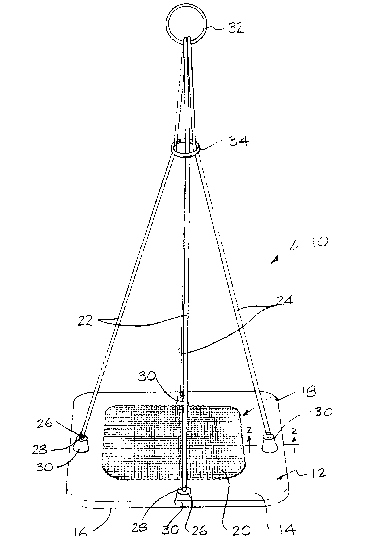Some of the information on this Web page has been provided by external sources. The Government of Canada is not responsible for the accuracy, reliability or currency of the information supplied by external sources. Users wishing to rely upon this information should consult directly with the source of the information. Content provided by external sources is not subject to official languages, privacy and accessibility requirements.
Any discrepancies in the text and image of the Claims and Abstract are due to differing posting times. Text of the Claims and Abstract are posted:
| (12) Patent Application: | (11) CA 2069121 |
|---|---|
| (54) English Title: | URN LOWERING DEVICE |
| (54) French Title: | DISPOSITIF D'ABAISSEMENT D'URNE |
| Status: | Deemed Abandoned and Beyond the Period of Reinstatement - Pending Response to Notice of Disregarded Communication |
| (51) International Patent Classification (IPC): |
|
|---|---|
| (72) Inventors : |
|
| (73) Owners : |
|
| (71) Applicants : | |
| (74) Agent: | ADE & COMPANY |
| (74) Associate agent: | |
| (45) Issued: | |
| (22) Filed Date: | 1992-05-21 |
| (41) Open to Public Inspection: | 1993-11-22 |
| Availability of licence: | N/A |
| Dedicated to the Public: | N/A |
| (25) Language of filing: | English |
| Patent Cooperation Treaty (PCT): | No |
|---|
| (30) Application Priority Data: | None |
|---|
-7-
ABSTRACT
An urn lowering device includes a flat platform with a non-slip pad on the
top surface to support an urn. Two loops of cord are fastened at their ends to the platform
and pass through a handle ring above the platform so that the platform may be suspended
in a horizontal orientation from the ring. A second, retaining ring, surrounds the cords
above the urn and may slide down the cords towards the urn to further assist in retaining
the urn on the platform. Feet on the bottom of the platform support the platform in a level
position when it is lowered into a grave.
Note: Claims are shown in the official language in which they were submitted.
Note: Descriptions are shown in the official language in which they were submitted.

2024-08-01:As part of the Next Generation Patents (NGP) transition, the Canadian Patents Database (CPD) now contains a more detailed Event History, which replicates the Event Log of our new back-office solution.
Please note that "Inactive:" events refers to events no longer in use in our new back-office solution.
For a clearer understanding of the status of the application/patent presented on this page, the site Disclaimer , as well as the definitions for Patent , Event History , Maintenance Fee and Payment History should be consulted.
| Description | Date |
|---|---|
| Time Limit for Reversal Expired | 1997-05-21 |
| Application Not Reinstated by Deadline | 1997-05-21 |
| Deemed Abandoned - Failure to Respond to Maintenance Fee Notice | 1996-05-21 |
| Application Published (Open to Public Inspection) | 1993-11-22 |
| Abandonment Date | Reason | Reinstatement Date |
|---|---|---|
| 1996-05-21 |
Note: Records showing the ownership history in alphabetical order.
| Current Owners on Record |
|---|
| DAVID P. GRAMBO |
| Past Owners on Record |
|---|
| None |